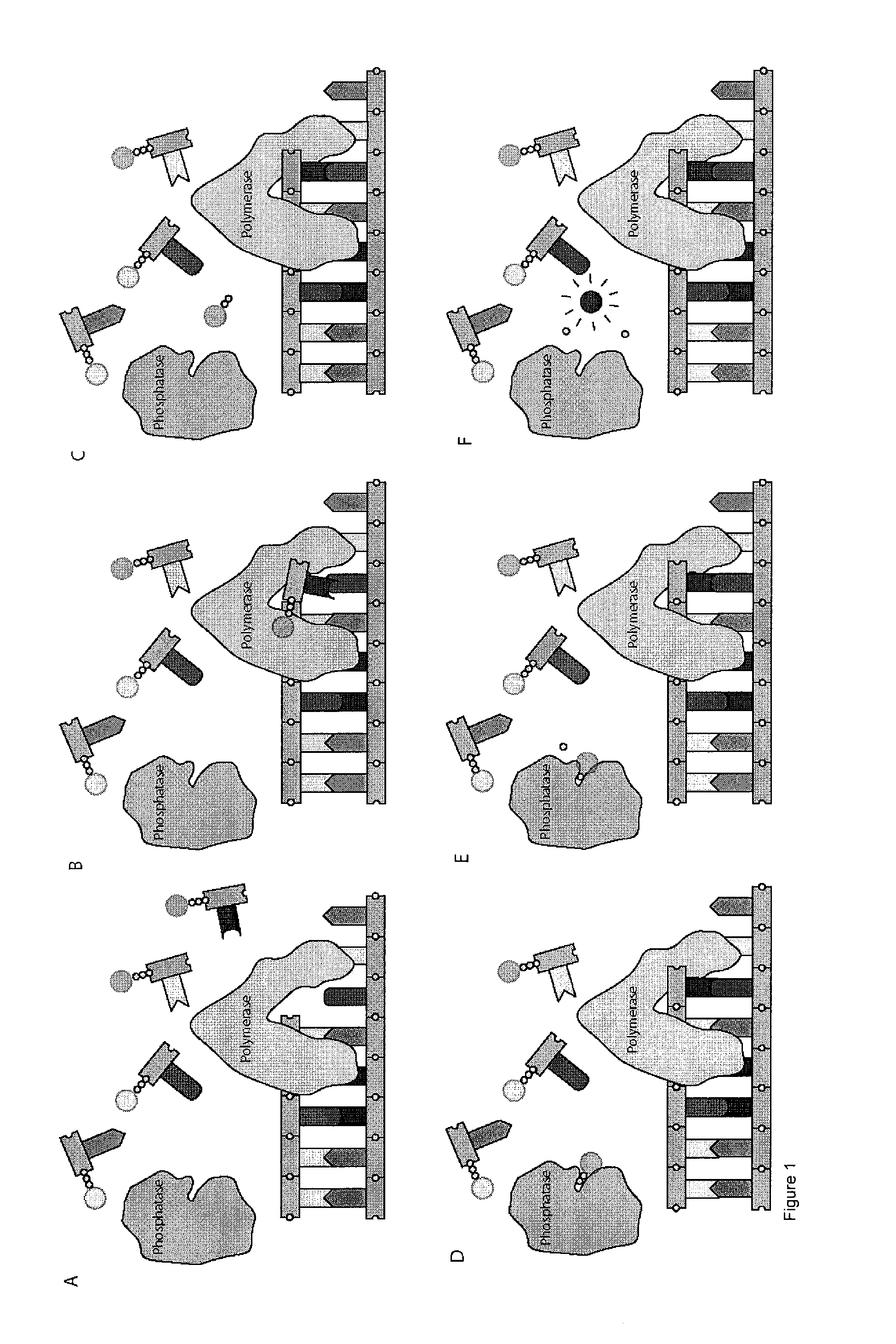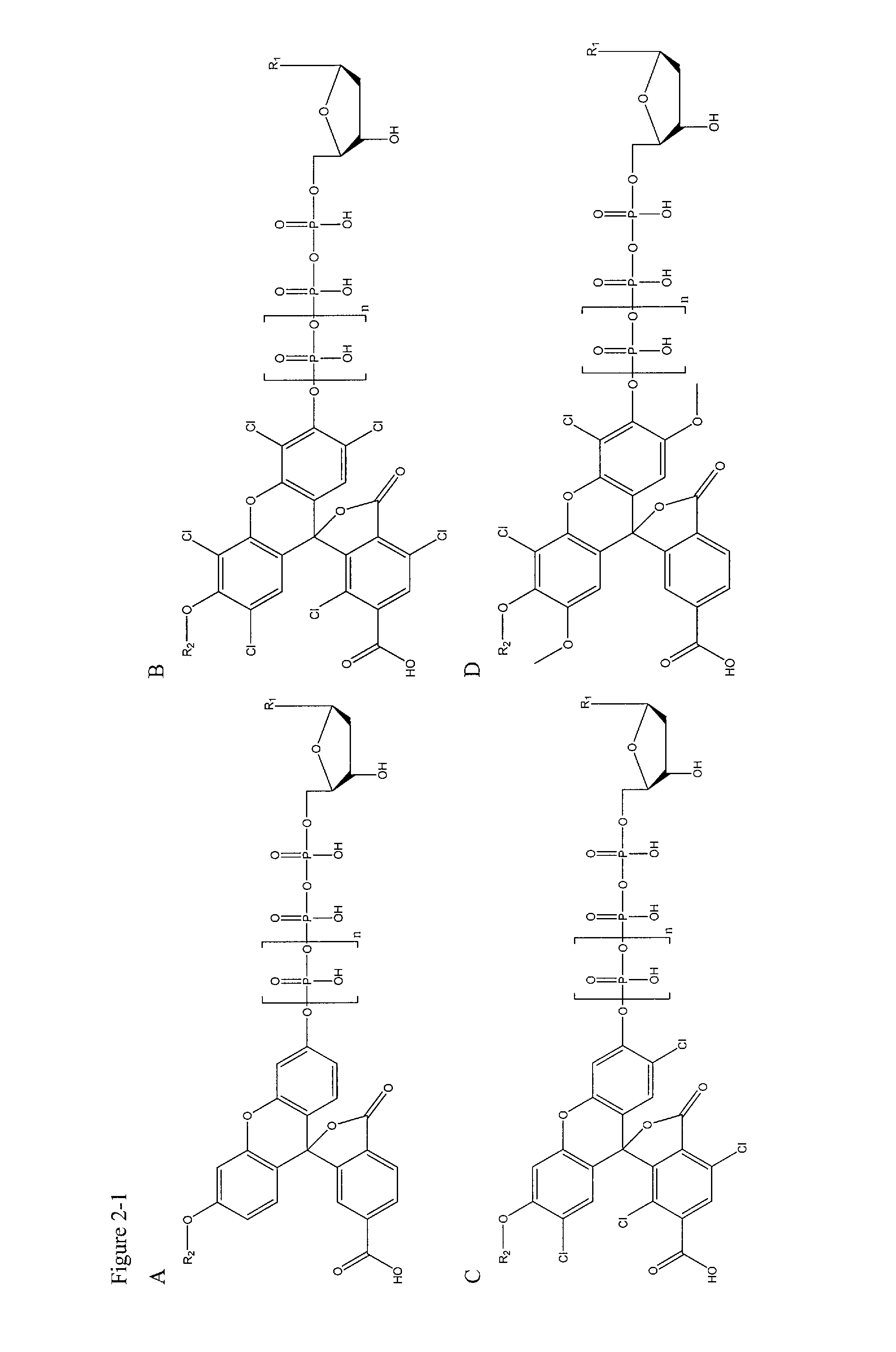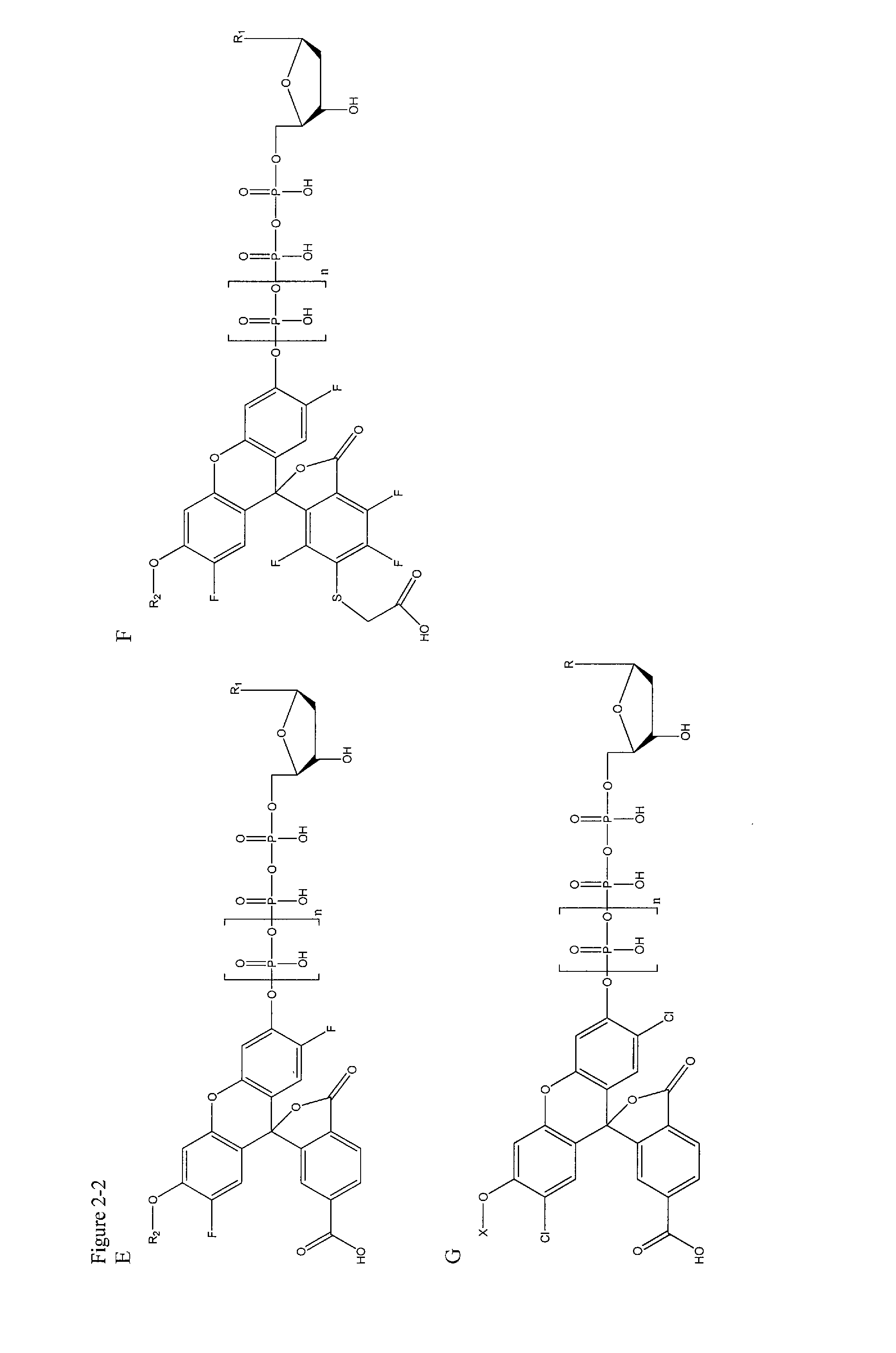Methods and compositions for continuous single-molecule nucleic acid sequencing by synthesis with fluorogenic nucleotides
a technology of fluorogenic nucleotides and single-molecule sequencing, which is applied in the field of single-molecule detection, single-molecule enzymology, and nucleic acid sequencing, can solve the problems of increasing costs, reducing the speed of detection, and using fluorescently labeled nucleotides for single-molecule “sequencing by synthesis, so as to achieve low overall cost and facilitate sample preparation
- Summary
- Abstract
- Description
- Claims
- Application Information
AI Technical Summary
Benefits of technology
Problems solved by technology
Method used
Image
Examples
example 1
[0125]In this example, 500 nm streptavidin-coated polystyrene beads (Bangs Laboratories) were incubated at a concentration of 50 μM for 20 minutes in reaction buffer (50 mM Tris-HCl pH 8, 50 mM NaCl, 0.1% Tween-20, 0.2% Pluronic-F108, 1% PEG-10K) with 5 nM biotinylated template DNA (a primed poly-C homopolymer) on ice. The composition of the reaction mixture was then adjusted to include dGTP-γ-resorufin (20 μM), MnCl2 (1 mM), SAP (1 μM), and either φ29 (exo-) DNA polymerase or Klenow fragment (exo-) DNA polymerase on ice. When Klenow fragment (exo-) DNA polymerase was used, 0.25 mM DTT was included in the reaction mixture. The reaction mixture was immediately sealed in PDMS microreactors (either 5 μm or 1.5 μM in diameter) and imaged on a fluorescence microscope.
[0126]A microscope (Nikon TE-2000 with 60×1.2 NA water-immersion objective) was operated in wide-field fluorescence mode with 560 nm laser excitation. Bright field and fluorescence signals were imaged onto an EM-CCD camera (...
example 2
[0127]In this example, deoxynucleotide triphosphates (dNTPs) derivatives that are linked through the γ-phosphate to different dyes, which are essentially non-fluorescent at relevant wavelengths in solution, are synthesized. High concentrations of labeled dNTPs may thus be present in solution without fluorescence background, as these molecules are “dark.” Once a DNA polymerase incorporates a labeled dNTP, cleaving between the α- and β-phosphates of the nucleotide, the liberated fluorophore becomes fluorescent, either directly upon cleavage from the dNTP, or after further enzymatic action of other enzymes (Sood et al. J. Am. Chem. Soc., 2005, 127, 2394-2395 and Kumar et al. Nucleotides, Nucleosides, and Nucleic Acids, 2005, 24, 401-408) (through a coupled enzyme assay discussed further below). These newly fluorescent molecules are then detected using standard fluorescence detection techniques (English et al. Nat. Chem. Biol., 2006, 2, 87-946) (such as total internal reflection fluores...
example 3
[0132]We fabricated microreactors to trap fluorophores and fluorogenic substrates. To improve the sealing characteristics of PDMS microreactors, we used standard photolithographic methods to construct a microreactor array with wall thickness of greater than 1 micron. First, a flat 3 inch silicon wafer was coated with 0.5-1.5 microns of SU-8 2 photoresist and prebaked for 60 seconds at 65° C. and then 60 seconds at 95° C. Next, this photoresist was exposed through a patterned, chrome-on-glass photomask to UV light, which cross links the photoresist. This wafer is then post baked (identically to the prebake step) and developed, resulting in a resist-on-silicon master (FIG. 12). Finally, PDMS was poured onto this master, cured, and then used in experiments (FIG. 12). We have created ˜0.5, ˜1, ˜1.5, ˜2, ˜5, and ˜20 micron diameter reaction chambers using these methods.
[0133]To reduce nonspecific absorption of proteins and other species, PDMS was coated with an amorphous fluoropolymer CY...
PUM
| Property | Measurement | Unit |
|---|---|---|
| fluorescence emission | aaaaa | aaaaa |
| fluorescent | aaaaa | aaaaa |
| non-fluorescent | aaaaa | aaaaa |
Abstract
Description
Claims
Application Information
 Login to View More
Login to View More - R&D
- Intellectual Property
- Life Sciences
- Materials
- Tech Scout
- Unparalleled Data Quality
- Higher Quality Content
- 60% Fewer Hallucinations
Browse by: Latest US Patents, China's latest patents, Technical Efficacy Thesaurus, Application Domain, Technology Topic, Popular Technical Reports.
© 2025 PatSnap. All rights reserved.Legal|Privacy policy|Modern Slavery Act Transparency Statement|Sitemap|About US| Contact US: help@patsnap.com



